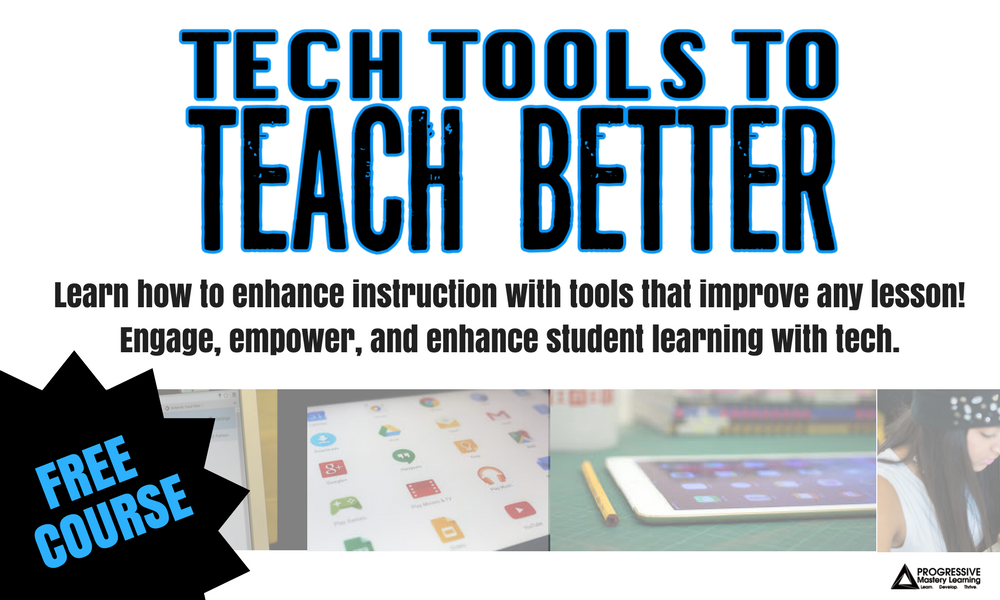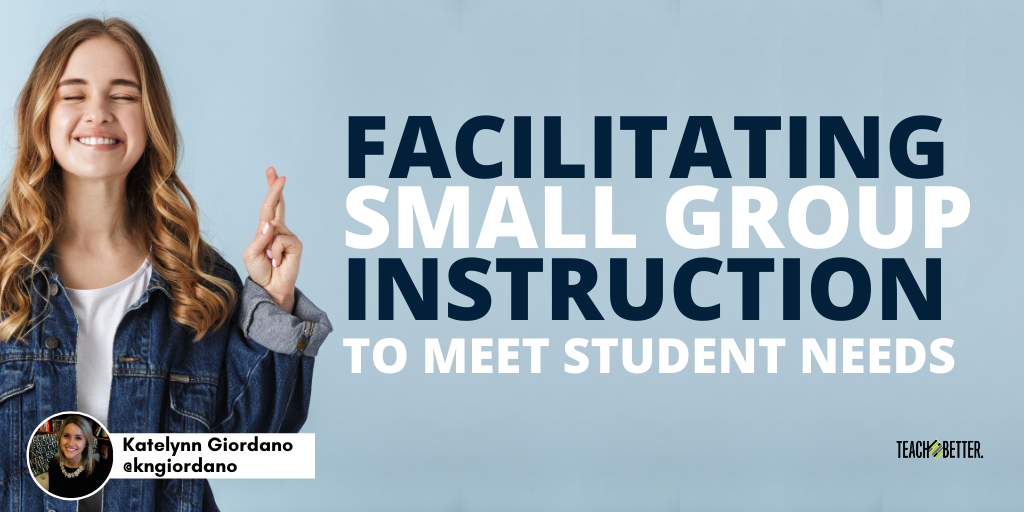TL;DR:
- Small group instruction and one-on-one conferences are possible this year.
- Five tips to make these types of instruction happen – whether you’re fully virtual or hybrid.
In my classroom, like many others, small group instruction is a cornerstone of our structure. In fact, a majority of the teaching I do is done in a small group model. I work with students one-on-one, in skills-based groups, and in groupings based on their pace in a unit. This is mainly because I run my classroom in a mastery-focused, student self-paced model.
And, again like many others, this school year is posing a great many challenges to that hallmark practice. Small group instruction is made much more difficult in a fully virtual or hybrid model. Not only are the time constraints more severe, but we are also faced with an even greater number of responsibilities at any given time. Conferencing can be a lot to manage in a normal school year, and this year it has felt overwhelming to say the least.
I spent a lot of time considering this core aspect of my instruction. Should I abandon it for now? Do I find a different way to do it? How am I even going to keep track? Do I even have time to think about this right now?
Well, friends, I finally spent some time with this conundrum. I allowed myself to focus on it, really sit with it, and problem solve for awhile. And while my suggestions may not work for everyone, while it might not work out, I believe I’ve figured out a few pieces of the puzzle that is small group instruction during a global pandemic.
Facilitate small groups based on student needs.
When I want to meet with students in a small group, it really helps to have a common focus. I’m currently establishing our reading and writing workshop, and I was trying to figure out a way to still hold conferences with my kids.
No matter what type of teaching you are doing - hybrid, virtual, or in person - you are going to do amazing things with your kids. Keep them at the center, keep your focus, and continue to give yourself grace. Click To TweetThe conferences we’ve held in person were always based on student need, and they were done right in the moment. Since we’re fully virtual, those in the moment meetings probably aren’t going to happen. Instead, I’ve started identifying target areas or skills.
Using benchmark assessments to identify foundational skills, I’m now making groups that will hone in on specified areas for improvement. Instead of identifying those needs in the moment, I’m using a more planned approach. This way, I can still meet student needs, but I’m not trying to figure out who needs what through a screen.
In a hybrid model where time is more valuable than ever, this approach would ensure time is well spent. It would make groups manageable and allow for that valuable in-person time to be focused on what students need most.
Create a schedule – and stick to it.
This is probably the biggest need, and the hardest one for me to do. My conferences tend to be on the fly, “Hey you need this, let’s chat” style. Even my former scheduling style was to throw a list up on the whiteboard and have students add their names as needed. I would ensure I met with everyone, but it wasn’t planned out ahead of time. That simply isn’t going to work right now.
Instead, for one-on-one conferences, I’m having students sign up using an online scheduling tool. I’ve used both SignUpGenius and Calendly for this. Both have their benefits and drawbacks, but my students have found SignUpGenius easier to navigate, so that’s the one we’re using.
My students sign up for a time slot to meet with me via Zoom, and the expectation is that they arrive 2 minutes early to the waiting room. Then I am not waiting for them to show up, cutting into their conference time, and potentially running into the next one. I keep our time within the slotted 10 minutes, and we honor our start and end times religiously.
This would work incredibly well during a hybrid model – students can schedule their time slots while they are virtual and then you are able to honor that on the next in-person day. It also allows you to manage your availability so conferencing won’t cut into valuable whole-group instruction.
Provide an agenda & focus for the small group.
One aspect of an efficiently run conference or small group is knowing what you are going to discuss. And it isn’t enough for just you, the educator, to know. Your students need to know what to prepare for.
Provide them with an agenda ahead of time. Let them know exactly what you will be talking about and what materials they need, so they come prepared. Then you aren’t wasting time while they go find their book or try to come up with a question they need answered.
Use tech tools to facilitate the small group transitions.
In a fully virtual model, this is vital. We are using Zoom, and I was trying to figure out the best way to meet with small groups or individual students without disrupting the independent work of the rest of the class.
Originally, I figured I’d just send them all into a breakout room, except for the student(s) I needed to see. Decent plan, definitely workable, but it leaves all the kids in the breakout room “unsupervised”.
Then I saw a brilliant idea on Twitter (I love Twitter). I cannot for the life of me remember who suggested it, but they deserve a gold medal and Starbucks for life. Instead of sending the kids into a breakout room, send them all into the waiting room. They are still in the call and can be let back in, but they aren’t able to see or talk to each other without supervision. One tip – warn them before you do it, or they panic thinking they got kicked out.
If you’re less concerned about sending them to breakout rooms, but want to do so more effectively, a fabulous colleague of mine shared her approach. She has specific breakout rooms that students choose to be in. One is a silent workroom, one is a workroom with some chatting, and one is a quiet room that uses the chat function. Students share their preference via a Google form before class, and she creates rooms based on their responses. Definitely a cool idea, especially to create a more ‘class-like’ environment.
[scroll down to keep reading]
Remember that instruction is going to be different.
This is my mantra for everything right now. Instead of trying to exactly capture the small group instruction and one-on-one conferences we had before, we have to accept that they are going to look different. I have to remind myself of this constantly because, for one, I miss doing what I love in the way that I love to do it. But secondly, because I just cannot make a virtual or hybrid model fully imitate my classroom. Because it just isn’t possible.
And for now, that has to be okay.
No matter what type of teaching you are doing—hybrid, virtual, or in person—you are going to do amazing things with your kids. Keep them at the center, keep your focus, and continue to give yourself grace.
Sending love.
![]()
About Katelynn Giordano
Katelynn Giordano is a Middle Level Language Arts Educator in Illinois and Training & Development Specialist for the Teach Better Team. She writes on her blog, Curriculum Coffee, and for the Teachers on Fire magazine.
In 2019, Katelynn presented information on action research in the classroom with a team at the National Council of Teachers of English Convention in Baltimore.
Katelynn is a dynamic educator who is passionate about student voice and empowerment, promoting equity, and valuing teachers as professionals.
Katelynn is also a member of the Teach Better Speakers Network.



